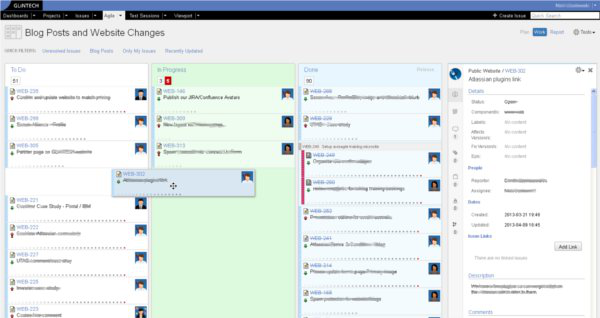Meet the GLiNTECH team. Well, some of them...
Our team is into software development. That being the case, it makes sense that our developers should use a tool like Atlassian’s JIRA for issue and project tracking; “the software the software makers use”.
So here’s a question: how many of the 10 GLiNTECH employees pictured above are actually software developers? The answer is... four. But how many of the 10 use JIRA? The answer is... all of them.
Interesting, no?
At GLiNTECH we’re finding more and more ways to use Jira and JIRA Software (formerly GreenHopper and JIRA Agile) beyond their original purpose. Our sales team use it, our admin team use it and our design team use it (they actually used it to create the above avatars for use in JIRA). The point is that we’re finding the JIRA/JIRA Agile combo can be used to keep track of pretty much anything across the business and they’re now amongst our most important everyday workplace tools.
To briefly explain to those unfamiliar with JIRA and JIRA Agile, they’re tools that work together to help manage tasks or projects. In very simple terms, you could think of them as a way to view a list of tasks which you can then drag & drop around into different areas; To Do, In Progress, Done. A JIRA Agile board linked to JIRA looks a bit like this...
Because of the accessibility to everyone within an organisation (depending on what access privileges they have), JIRA and JIRA Agile become powerful collaborative tools as users are encouraged to work, contribute and comment in a centralised space.
Aside from greater transparency, a big effect that has for us is less time spent in the email inbox. Instead, you can just work within JIRA and see everything related to the issue. That sort of collaboration and visibility helps us get things done faster - especially when you have distributed teams, or perhaps freelance employees, who might not be in the office every day. We also think the continual collaboration saves us from having to organise a lot of extra meetings.
Example - JIRA for Marketing
Say your marketing team wants to promote a particular part of your business on your website. Before you can make a change, you probably need some new copy, new images, a bit of feedback from others in the team, management approval, etc, etc.
Marketing might raise the issue: ‘Promote this feature on X page’. Within that issue there’ll likely be subtasks that go to different people depending on what they need to contribute to the task. So, in this case the copywriter and the designer would do their thing and reassign back to marketing. Marketing might add a comment; “Looks great, please post on Y page” and assign it to a manager for approval. The manager’s happy with it so assigns to the person updating the site who thinks, “hang on, wasn’t this website change for X page?”.
They can easily check back through the history of the issue which is all available to view - who’s done what, where, when, changed requirements, comments, attachments, links to other issues, etc. It’s all there in the issue. There are no messy email chains to wade through, just increased visibility in a centralised space for a task that involves a whole team - or a whole business for that matter.
For those kinds of visual-based changes, we also find the JIRA Capture (formerly Bonfire) plugin really handy. Software developers tend to use JIRA Capture for bugs - our design team use it because it’s simple to use and visually effective (designers tend to prefer pictures over words). Instead of typing what could be an ambiguous instruction, you can use JIRA Capture to make it quick, easy, and visible, like so...
Collaborative & Effective
The nature of our business means we’ve often got consultants working at different sites on different projects. What JIRA and JIRA Agile give our team is transparency so we can be distributed and still work together very effectively, collaborating and getting things done. It definitely saves us a bunch of time.
Between JIRA and JIRA Agile which we use for our issue tracking and Confluence which we use as a central repository, our team has access to pretty much everything they need in terms of internal content. We recently even started using Confluence for staff ‘newsletters’, where we send updates to a shared Space instead of sending out email newsletters. That way we don’t have to wait weeks until we’ve got enough content, we just post news as and when it happens. When we started doing this, staff engagement went up immediately.
All in all, these tools are really helping our business continue on the path to being more agile - and not just the software developers.
If you're interested in finding out more about Atlassian tools, we can show you Atlassian Training Courses.

